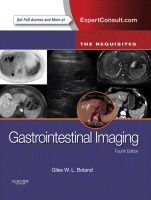Physical Address
304 North Cardinal St.
Dorchester Center, MA 02124

Anatomy The abdominal cavity is divided into both intraperitoneal and retroperitoneal spaces. The peritoneal cavity is lined by visceral and parietal peritoneum (a thin mesothelial membrane) and lies within the abdominal cavity, with two potential spaces, the greater and lesser…

The pancreas is an obliquely positioned retroperitoneal organ containing a tail, body, neck, head, and uncinate. It has a main duct (normal measurements, 2 to 3 mm in diameter) running the length of the pancreas from the tail proximally to…

The biliary tree develops embryologically along the course of the portal venous anatomy and is defined proximally by right and left intrahepatic biliary ducts, which join to form the common hepatic duct. A side appendage, the gallbladder, is attached to…

The spleen is part of the mononuclear phagocytic system (formally known as reticuloendothelial) and the largest lymphatic organ. Its red pulp is responsible for red blood cell and platelet metabolism and acts as a monocyte reservation. Its white pulp is…

The liver, as the largest and most complex organ in the abdomen, can present with diverse abnormalities. The most common clinical conundrum is the characterization of single or multiple hepatic lesions, primarily into benign or malignant disease, but there are…

Colon Anatomy The colon starts at the ileocecal valve and is made up anatomically of the cecum; appendix (which is discussed separately below); ascending, transverse, descending, and sigmoid colon; and rectum. The ascending and transverse colon develops along with the…

Anatomy The embryological development of the small bowel (midgut) is complicated, involving herniation into the umbilical cord and a 270-degree counterclockwise rotation before returning to the abdominal cavity. As a result, it is not surprising that there are several congenital…

Normal Anatomy The duodenum is classified into four parts. The first is the duodenal bulb, which is intraperitoneal before it passes posteriorly into the second part, or C-sweep, which is retroperitoneal and fixed. This second part starts at the superior…

Normal Anatomy The stomach begins at the gastric cardia (the portion that envelops the lower esophagus) and ends after the pylorus. It consists of a fundus, body, lesser and greater curvature, antrum, and pylorus. It has three layers of smooth…

The esophagus extends from the lower pharynx at the upper esophageal sphincter to the lower esophageal sphincter at the esophageal vestibule, or phrenic ampulla, just above the gastroesophageal (GE) junction. It consists of inner circular and outer longitudinal muscle layers.…